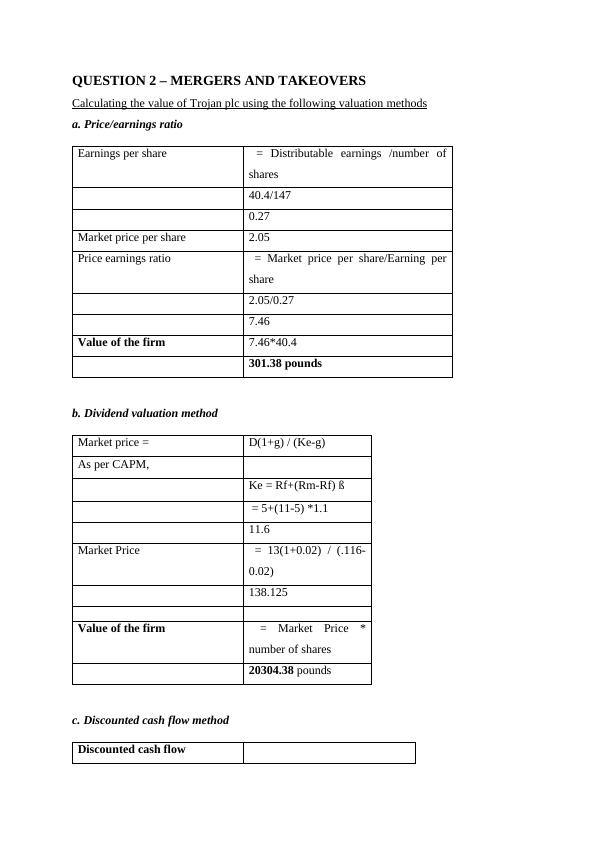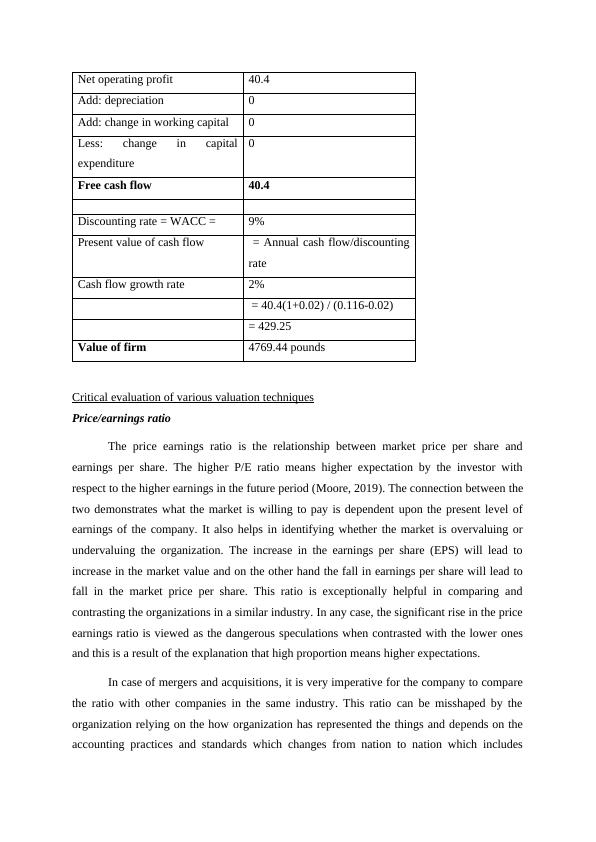Valuation Methods for Trojan plc
Added on 2023-01-11
14 Pages3957 Words67 Views
End of preview
Want to access all the pages? Upload your documents or become a member.
Valuation Methods in Financial Management
|14
|3823
|38
Financial Management: Valuation Techniques and Investment Appraisal
|15
|3763
|50
Valuation Techniques in Financial Management
|14
|3293
|31
Financial Management: Valuation of Companies and Investment Appraisal Techniques
|17
|4000
|45
Financial Management: Valuation Methods and Investment Appraisal Techniques
|14
|3955
|48
Financial Management: Mergers and Takeovers, Investment Appraisal Techniques
|17
|3750
|53




